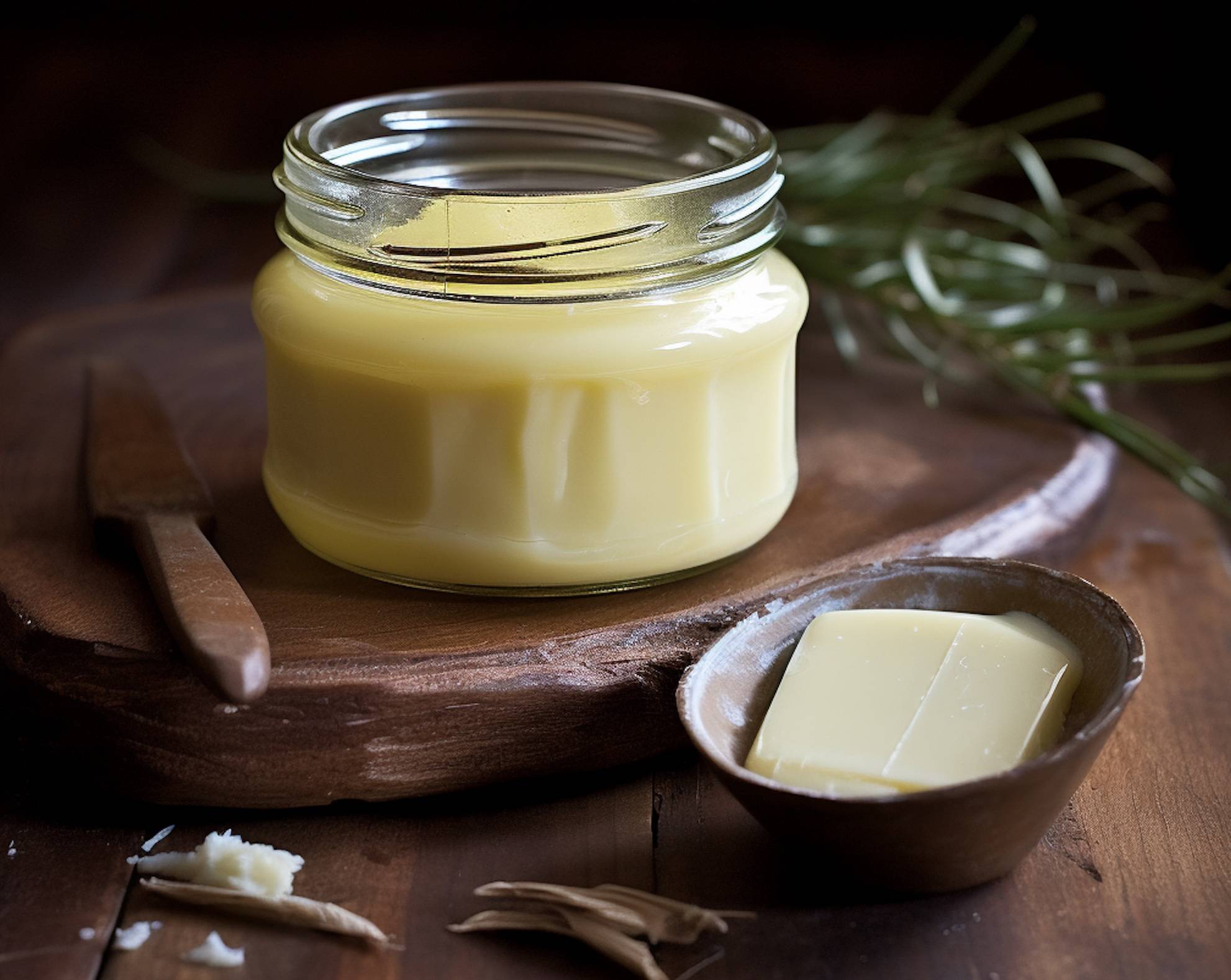
Beef Tallow Vs. Ghee: Which Is Better?
Hold your spatulas! We're about to dissect the culinary powerhouses of “beef tallow vs ghee.”
Picture this: sizzling steaks, crispy fries, and melt-in-your-mouth pastries. What do they have in common? The answer lies in the fats for cooking them.
Fats have been essential to our culinary journey, from ancient kitchens to modern foodie hubs. Each fat brings a unique flavor and personality to your dishes, from beef tallow to ghee.
It's time to break down their composition, nutritional goodness, and the savory secrets they hold.
So, let's put on our chef's hats and find the best fat for your cooking!
What is Beef Tallow?
Beef tallow, it's simpler than it sounds. It's basically the fat that comes from beef. Yep, that's right, the fat.
It's what happens when you cook down beef fat until it becomes a smooth, creamy substance. And this stuff has been around for ages, used in various cooking traditions.
Beef tallow isn't just fat. It has a special place in the kitchen. People love it for frying because it gives fries that crispy perfection we all crave.
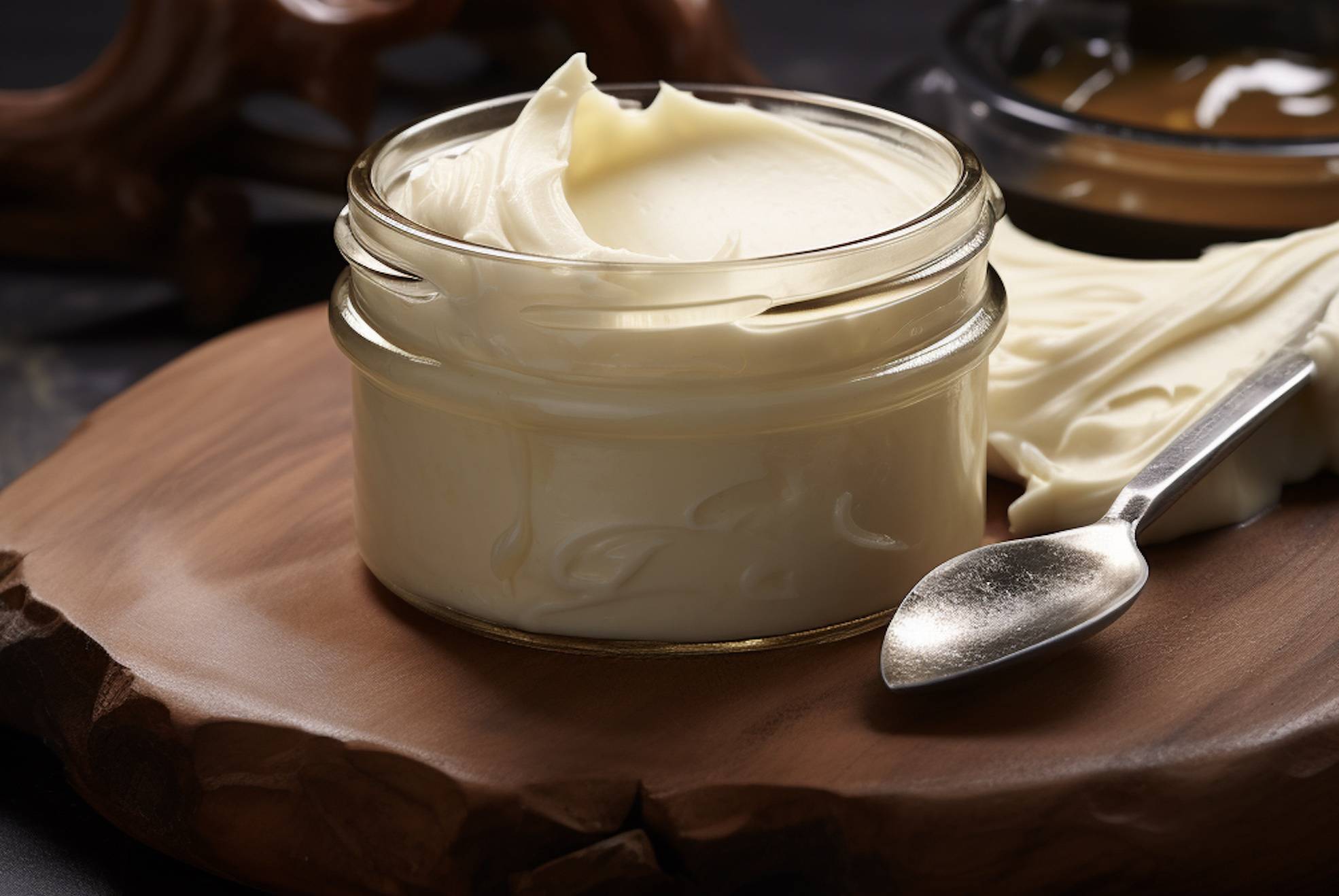
What is Ghee?
Ghee is like butter but with a twist. It's butter that's been simmered and strained, and magic happens. This process leaves behind pure, golden goodness. No more milk solids, just the good stuff.
So, ghee's like the upgraded version of butter. No lactose, no milk solids. Just pure, flavorful fat ready to rock your kitchen.
Ghee is a staple in Indian cuisine, tracing back centuries. Ayurveda, India's ancient health guide, loves ghee.
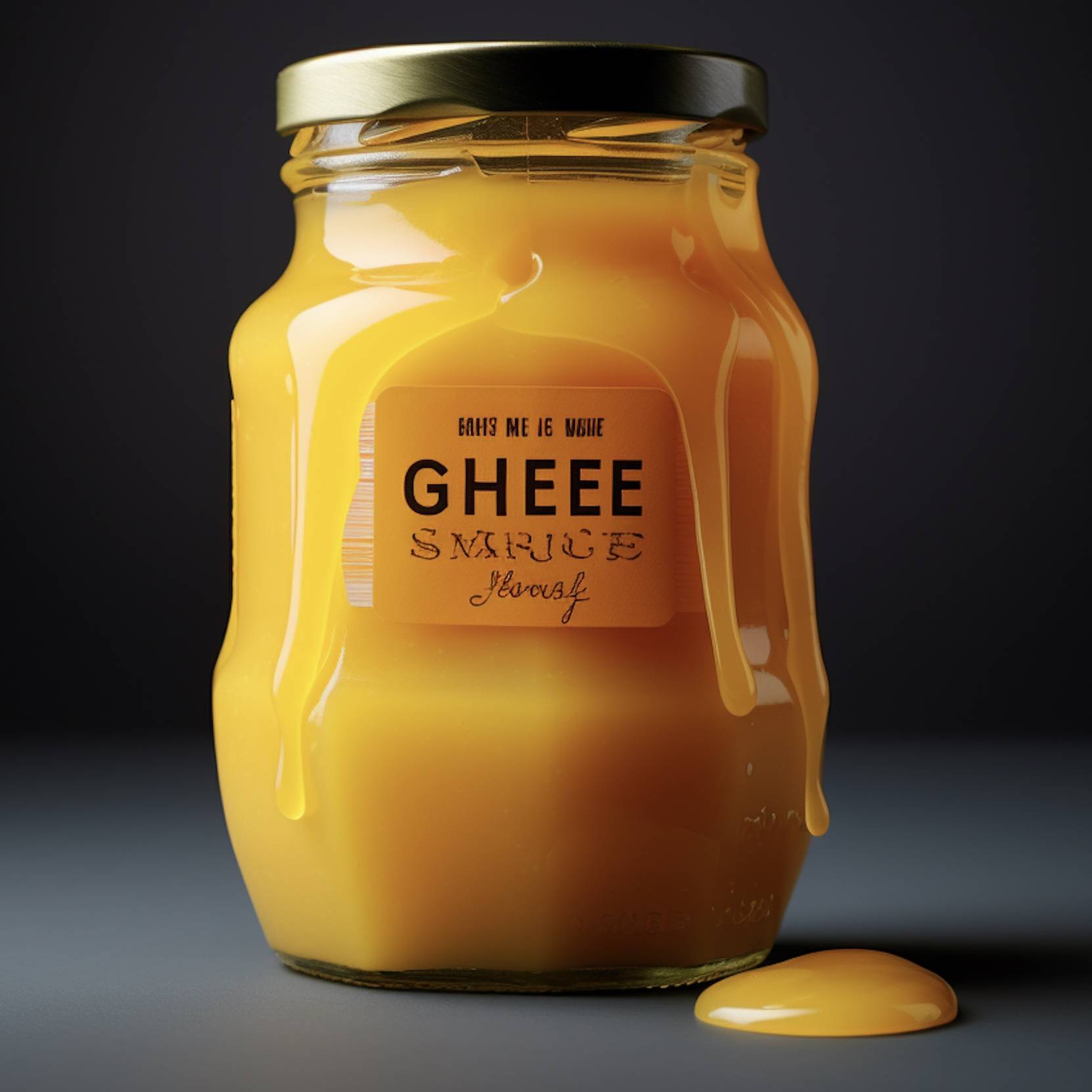
What Are The Nutrients Breakdown?
Now, let's get down to the nitty-gritty of beef tallow. It's a powerhouse of nutrients and understanding its composition is key to appreciating its culinary magic.
Beef Tallow
Beef tallow, every 100 grams (3.5 ounces), mainly provides the following nutritional values:
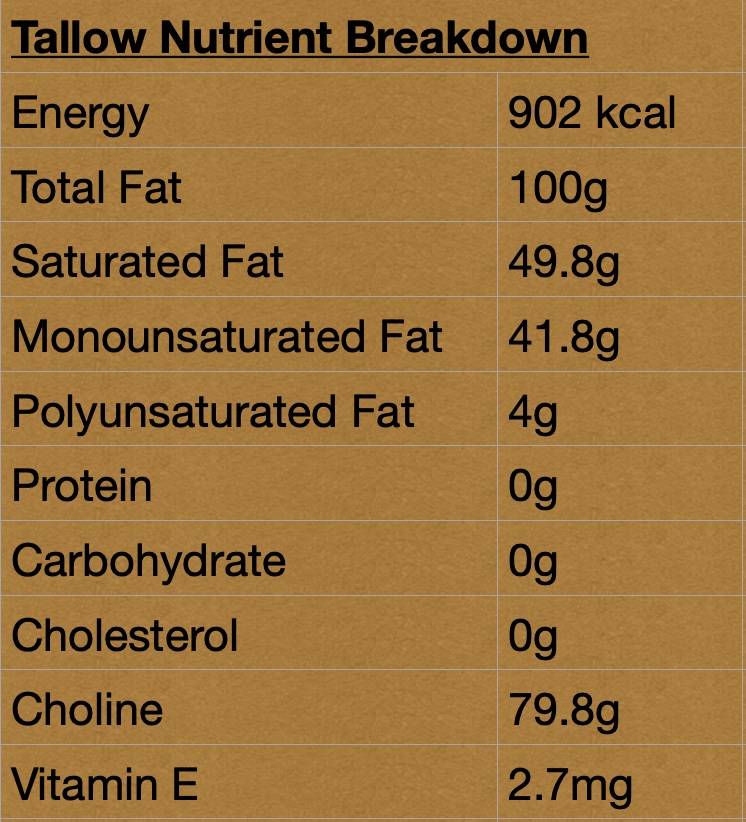
Ghee
Ghee is primarily composed of fat, with a high concentration of saturated fat and calories.
Here are the approximate nutritional values for 100 grams of ghee:
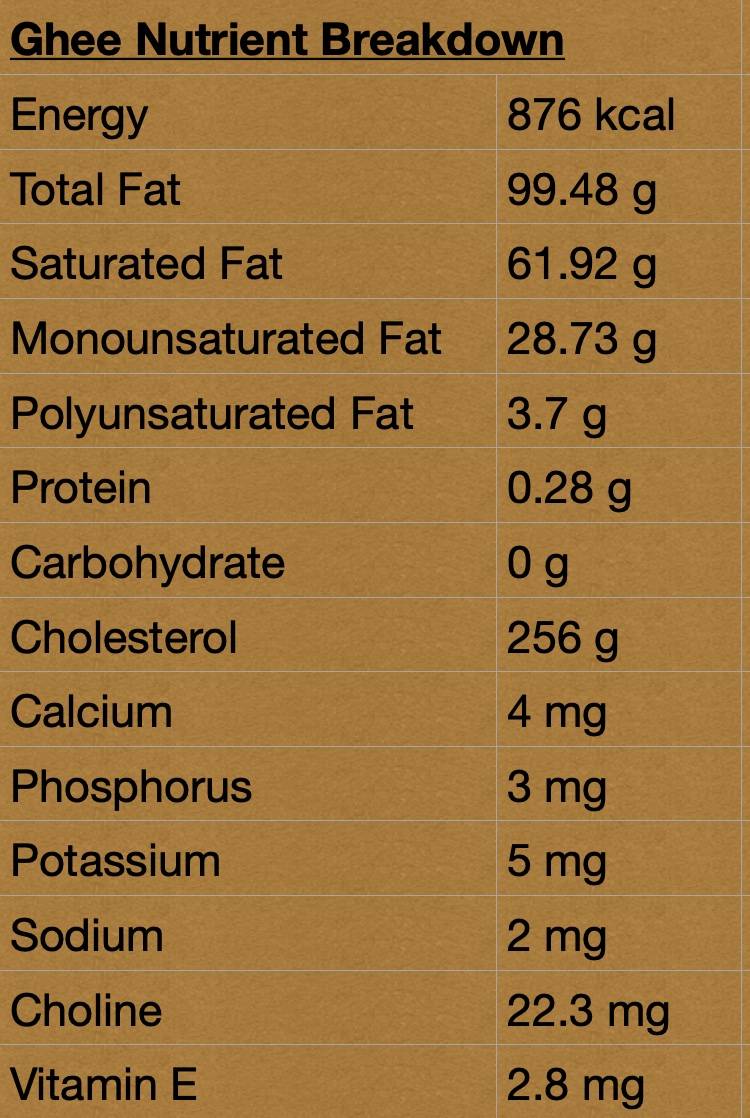
Beef Tallow Vs. Ghee: Health Implications
Unraveling The Beef Tallow Debate
Beef tallow often gets side-eyed because of its saturated fat content. But here's the deal: not all fats are made equal.
It's rich in good-for-you fats like oleic acid, the same stuff found in olive oil.
Beef tallow's nutritional information highlights the high-fat content in beef tallow, with significant levels of saturated and monounsaturated fats, making it a rich energy source.
Saturated fats: These are the sturdy building blocks that give it its solid form at room temperature. They play a vital role in a balanced diet in the right amounts.
Monounsaturated fats: These heart-healthy fats can help keep your ticker in top shape. Together, these fats create a flavorful, nutrient-rich base.
Additionally, it contains no carbohydrates or protein.
Allergic Reactions
For some folks, beef tallow can be an allergy trigger. If you've ever experienced allergic reactions to beef products, it's best to tread cautiously.
Keep an eye out for any signs of discomfort, and if you suspect an allergy, consult a healthcare pro pronto.
Ghee: A Balancing Act
Now, let's turn our attention to ghee, the golden elixir of Indian cuisine. It's a balancing act of flavors and health benefits, so let's break it down.
First things first, ghee packs its fair share of saturated fat. While too much-saturated fat can trouble your heart, ghee seems to play it cool. It's all about moderation.
Some studies suggest that the kind of saturated fat in ghee might not be as heart-unfriendly as others. Still, it's best to enjoy it in reasonable portions.
Ghee: Friendly for lactose and casein worries
If you're lactose intolerant or sensitive to casein, ghee might still be on the menu. During the clarifying process, both lactose and casein get left behind.
Ghee leaves those components in the dust so that you can enjoy that buttery flavor without worries. So, if you've been missing out on that buttery delight, give ghee a shot.
Ghee's Ayurvedic benefits
Now, let's dive into Ayurveda, the ancient Indian system of medicine.
Ayurveda fans sing praises of ghee for its potential health perks. It's like a little dollop of well-being, from aiding digestion to promoting mental clarity.
But as with any remedy, it's wise to consult your dosha (your Ayurvedic body type) before going all-in on the ghee train.
Vitamins in Tallow and Ghee
Beef tallow and ghee is primarily composed of fats, and it contains a variety of vitamins, although the amounts may not be as high as in some other animal-based or plant-based foods. The vitamins found in beef tallow and ghee include:
Vitamin E: Beef tallow contains small amounts of vitamin E, which is an antioxidant that helps protect cells from oxidative damage.
Vitamin D: Beef tallow can contain some vitamin D, especially if it is from grass-fed beef. Vitamin D is essential for bone health and various other bodily functions.
Vitamin K: Beef tallow contains vitamin K, which plays a role in blood clotting and bone health.
Vitamin A: Beef tallow may contain trace amounts of vitamin A, which is important for vision, immune function, and skin health.
Winner: Both
Ghee's lactose and casein-free nature makes it suitable for those with dairy sensitivities. Both are great choices to start cooking. They aren't processed such as vegetable oils. These two choices are the best choice to people looking for natural alternatives.
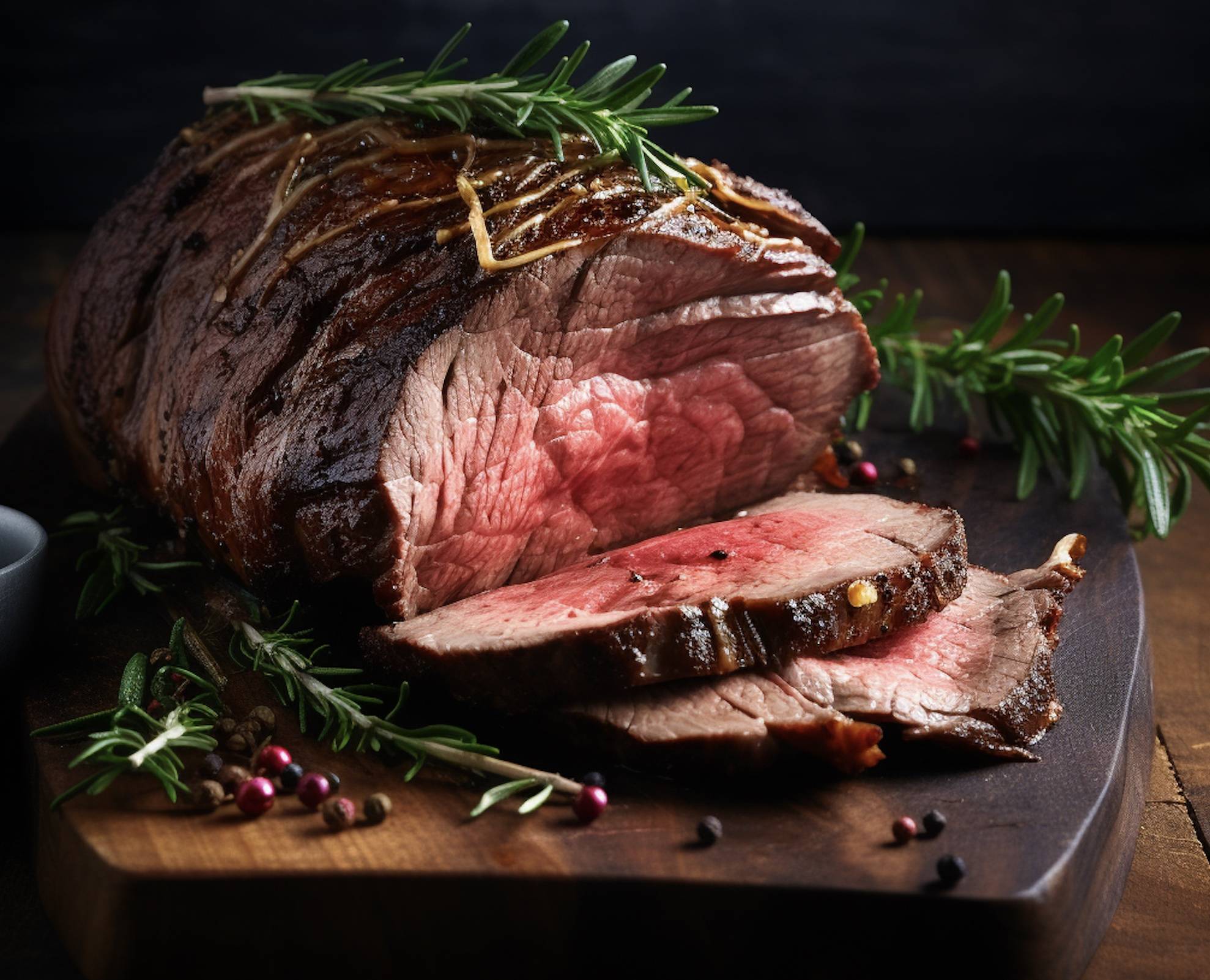
Beef Tallow Vs. Ghee: Flavor And Aroma
Beef Tallow: Bold and Robust Flavor
When it comes to flavor, beef tallow doesn't mess around. It's bold, it's robust, and it's here to elevate your dishes.
Enhancing meat dishes
You know that sizzle sound when you throw a steak on a hot skillet? That's the magic of beef tallow.
It enhances the meaty goodness, adding an extra layer of deliciousness that's hard to beat. Whether grilling, searing, or roasting, beef tallow is your flavor-packed companion.
Flavor In Baking
Beef tallow brings its A-game to baking, too. Imagine your pie crusts with a hint of that savory richness – that's what beef tallow does.
So, next time you're in the kitchen whipping up a batch of pastries, consider trying beef tallow. Your taste buds will thank you.
Enhancing Meat Dishes
You know that sizzle sound when you throw a steak on a hot skillet? That's the magic of beef tallow.
It enhances the meaty goodness, adding an extra layer of deliciousness that's hard to beat. Whether grilling, searing, or roasting, beef tallow is your flavor-packed companion.
Smoke Point and Cooking Applications
Beef tallow has a distinct flavor and high smoke point (around 250 °C). This makes it suitable for certain cooking methods where ghee or other fats cannot easily replace it.
Deep Frying
Picture that you're about to drop those crispy fries or golden chicken nuggets into a bubbling pot of hot fat. That's where beef tallow shines.
Its high smoke point means it can take the heat without becoming a smoky mess. The result? Crunchy, mouthwatering goodness that'll make your taste buds do a happy dance.
Pan-Frying and Searing
When you want to achieve a deep, caramelized crust on meat or vegetables, beef tallow is an ideal choice. It adds a robust flavor and helps achieve a beautiful sear on steaks, burgers, and chops. Beef tallow can also be used for pan-frying cutlets and schnitzels.
Searing and Grilling
Beef tallow is also your go-to for searing a steak or grilling up a storm. When the flames are roaring, and the grill's blazing hot, tallow's got your back.
It locks in the juices, creating that perfect sear and adding a savory touch to your meats. So, whether it's deep frying or grilling, beef tallow knows how to handle the heat.
Pie Crusts
Some traditional pie recipes, especially in savory pies like meat pies or pot pies, call for beef tallow in the pastry crust. The tallow contributes to the flakiness and enhances the savory flavor of the crust.
Baking
Traditional Pastry: In some old-fashioned baking recipes, beef tallow was used in pastries like biscuits, scones, and certain bread recipes. While this is less common today, it can still be an option for those looking to recreate authentic, vintage recipes.
Confits
Beef tallow can be used for making confit, a preservation method where meat, usually duck or poultry, is slowly cooked in its fat until tender and flavorful. Beef tallow confit can be used for preserving and cooking meats like beef or pork.
Roasting Root Vegetables
For exceptionally flavorful roasted root vegetables, such as potatoes, carrots, and parsnips, beef tallow can be used instead of ghee or vegetable oil. It imparts a hearty and savory taste to the vegetables.
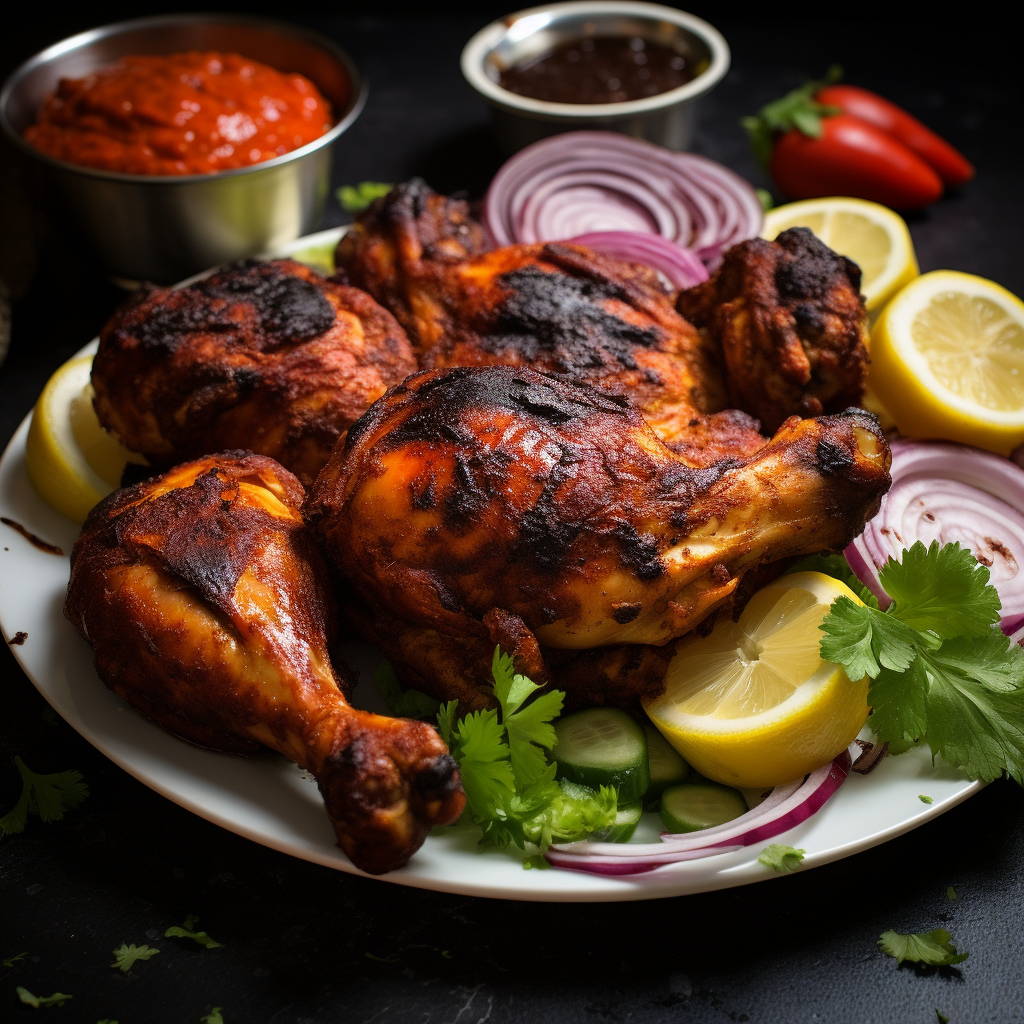
Ghee: Your Versatile Culinary Sidekick
Ghee is a versatile cooking fat with a unique flavor profile and a higher smoke point than butter. That makes it well-suited for various cooking methods.
While it can be replaced with other fats like beef tallow in some recipes, there are specific dishes and techniques where ghee's distinct characteristics shine.
Indian cuisine
Ghee is a staple in Indian cooking and is used in a wide range of dishes.
Some examples include making traditional Indian flatbreads (roti, naan, and paratha), preparing classic rice dishes (Biryani and Pulao), cooking Dal (lentils) and curries.
Clarified butter for Tadka/Tempering
In Indian cuisine, ghee is often used for Tadka or tempering. It involves heating ghee and adding spices like cumin, mustard seeds, and curry leaves to infuse their flavors into the oil. This seasoned ghee is then poured over dishes like dal or vegetables to enhance their taste.
Making Indian sweets
Many Indian sweets (Mithai) rely on ghee for their rich buttery taste. Examples include ghee-laden sweets like Ladoo, Halwa, and Gulab jamun.
Sautéing and Stir-Frying
Ghee's high smoke point suits it for high-heat cooking methods like sautéing and stir-frying. It imparts a delightful, nutty flavor to vegetables, grains, and proteins.
Baking and Pastries
Ghee can be used in baking, especially for cookies, cakes, and pastries. It provides a unique flavor and helps create a tender and crumbly texture in baked goods.
Flavoring Popcorn
Ghee can flavor popcorn, adding a rich buttery taste without the moisture that regular butter might introduce.
Traditional Ayurvedic and Medicinal Recipes
In Ayurvedic cooking, ghee is considered a beneficial and healing fat.
It is often used in preparations like golden milk (turmeric milk) and herbal formulations for its potential health benefits.
Result: Draw
The outcome leans toward a draw in evaluating the suitability of beef tallow and ghee for various culinary applications.
With its high smoke point, beef tallow excels in demanding cooking methods like deep frying, pan-frying, and searing. It also finds its place in pastry-making.
However, it may not be as commonly used in certain culinary traditions or modern recipes.
Ghee shines in specific culinary contexts, such as Indian cuisine. It is also valued for tempering spices and sautéing. In baking and Ayurvedic cooking, ghee offers distinct advantages.
But, it may not be as versatile as beef tallow in high-heat applications like deep frying.
Cuisine Dishes: Get Ready To Drool
Cuisine Dishes Using Beef Tallow
Poutine (Canadian): Poutine is a beloved Canadian dish consisting of French fries topped with cheese curds and smothered in beef gravy, often made with beef tallow. The hot gravy melts the cheese curds, creating a delicious and indulgent comfort food.
Yorkshire Pudding (British): Yorkshire pudding is a traditional British side dish made from a batter of flour, eggs, milk, and beef drippings (often beef tallow). It is typically served alongside roast beef and gravy.
Tallow-Fried Chicken (Southern U.S.): In some Southern cooking traditions, fried chicken is cooked in a combination of oils and fats, including beef tallow. This method imparts a unique flavor and crispy texture to the chicken.
Tallow-Fried Potatoes (British and American): In some regions, potatoes are fried in beef tallow to create a rich and flavorful version of French fries or chips.
Beef Tallow Tamales (Mexican): While lard is the traditional choice for making tamales, some recipes use beef tallow for a different flavor profile. Beef tallow tamales are popular in certain Mexican regions.
Tallow-Fried Fish (Various): In many coastal regions, especially in the Mediterranean and Gulf of Mexico, fish and seafood are fried in beef tallow to enhance their flavor. This method is known for creating a crisp and flavorful crust.
Pirozhki (Russian and Eastern European): Pirozhki are small, stuffed pastries popular in Russian and Eastern European cuisines. The pastry dough is often enriched with beef tallow to create a tender and flaky texture.
Gourmet Burgers (Various): Some gourmet burger establishments use beef tallow for cooking their burgers to impart an extra layer of beefy flavor and richness. It's often used in "smash burgers" for their crispy edges.
Traditional Fries (Belgian): In Belgium, where fries (frites) are a culinary institution, some vendors still use beef tallow for frying potatoes to create classic, flavorful fries.
Traditional Mexican Refried Beans: In some Mexican recipes, especially in the northern regions, refried beans are prepared with beef tallow, giving them a rich and savory taste.
Cuisine Dishes Using Ghee
Ghee Rice, Nei Choru (India): A fragrant dish made by sautéing rice in ghee, spices, and sometimes nuts or raisins.
Ghee Roast Dosa (India): A South Indian crepe made from fermented rice and lentil batter, cooked on a grill with generous ghee.
Ghee Biryani (Pakistan): A flavorful rice dish cooked with marinated meat and aromatic spices, where ghee is often used for added richness and flavor.
Dal Bhat (Nepan): The traditional dish of rice (Bhat) and lentil soup (Dal) is often served with a dollop of ghee for extra flavor.
Gheimeh Stew (Iran): A stew made with yellow split peas, tomatoes, and meat, often garnished with a drizzle of ghee for added richness.
Injera (Ethiopia): Ghee is sometimes used in the preparation of injera, a sourdough flatbread that is a staple in Ethiopian cuisine.
Tsampa (Tibet): A Tibetan staple food made from roasted barley flour mixed with ghee or butter tea.
Beurre Noisette (France): While not ghee, beurre noisette is similar in that it's clarified butter cooked until it reaches a nutty, golden-brown color. It's used in various French dishes for its rich flavor.
Result: Draw
Both fats offer versatility that transcends cultural boundaries. It makes them essential ingredients in many dishes worldwide. Beef tallow's rich flavor and high smoke point lend themselves to various cuisines. At the same time, ghee's unique nutty taste and versatility have made it a staple in Indian, Middle Eastern, and South Asian cooking.
Beef Tallow vs Ghee: Shelf Life & Storage
Beef Tallow: Your Culinary Companion
Regarding shelf life, beef tallow knows how to go the distance.
Once you've got that jar of liquid gold, here's the scoop: keep it in a cool, dark place. A pantry or cupboard does the trick. Just make sure it's sealed tight, and you're golden.
If you want to give your beef tallow some extra mileage, consider refrigeration. This slows down any potential changes in flavor or texture.
So, if you're in it for the long haul, pop it in the fridge, and it'll stay good to go for months.
Ghee: Preservation Without Preservatives
One of the remarkable things about ghee is its knack for self-preservation. It's like it has a built-in shield against spoiling.
How does it do that? Well, ghee contains natural antioxidants that help fend off the ravages of time.
These antioxidants help keep the fat stable and prevent it from going rancid, even when stored at room temperature for months.
Here are some tips to extend your precious ghee's shelf life:
1. Keep it in an airtight container away from direct sunlight and heat.
2. Moisture is its enemy, so avoid introducing any water into the container.
3. And remember, a clean, dry spoon is your best friend when scooping out ghee.
Winner: Ghee
Ghee emerges as the clear winner for those seeking a fat with exceptional longevity.
Ghee has a significantly longer shelf life than beef tallow because it is essentially clarified and purified butter, with all moisture and milk solids removed during cooking.
This absence of water content and milk solids makes ghee highly resistant to spoilage and rancidity.
When stored in an airtight container in a cool, dark place, ghee can remain stable for months, if not years, without refrigeration.
In contrast, beef tallow, while still having a reasonable shelf life, may not match the extended storage capabilities of ghee, particularly in less controlled storage conditions.
Which Is Easier To Find and Buy?
Finding Beef Tallow: Not As Hard As You Think
So, where can you get your hands on this culinary gem? Look only as far as your local butcher or nearest grocery store. They often have beef tallow ready to go.
If that's not an option, check out online retailers – they've got your back. It's as simple as a few clicks, and beef tallow is coming to your kitchen.
And if you're curious about trusted brands, a few names stand out. Keep an eye out for brands like Epic Provisions and Fatworks.
They have a reputation for quality beef tallow that's perfect for all your cooking adventures.
Ghee: A Convenient Choice
Your local grocery store is a good starting point. Many supermarkets now have a dedicated section for specialty and ethnic foods, where you'll likely find ghee.
If you're a fan of online shopping, platforms like Amazon and specialty food websites often have many options.
There are a few trusted names in the world of ghee. Look for brands like Organic Valley, Pure Indian Foods, and Ancient Organics.
These brands are known for their quality and often offer options like grass-fed or organic ghee, catering to different preferences and dietary needs.
Result: Draw
The ease of finding and buying both beef tallow and ghee tends to result in a draw.
Both fats are commonly available in many grocery stores, supermarkets, and specialty food stores in various regions worldwide.
They are also readily accessible through online retailers and can be sourced from local butchers or specialty markets.
Beef Tallow Vs. Ghee: Cost Comparison
Beef Tallow: Budget Friendly Option
Let's talk about money for a minute. If you're looking for a wallet-friendly cooking fat, beef tallow might be your new kitchen BFF.
Here's the scoop: beef tallow is kind to your budget, especially when you buy it in bulk. Tallow's affordability in larger quantities means you can stretch those dollars without compromising on quality.
Beef tallow's versatility in the kitchen means you can use it for various cooking methods. It doesn't just sizzle in the frying pan; it also works wonders in roasting, sautéing, and more.
So, not only is it easy on your wallet, but it's also a savvy choice to make your dishes shine without breaking the bank.
Ghee: A Premium Choice Worth Considering
Now, let's dive into the dollars and cents of ghee – it's a premium choice.
If you're making a special dish or want to add a unique flavor to your cooking, it's worth the investment. Think of it as a way to elevate your meals to a whole new level.
So, while it might be a premium choice, there are times when ghee is worth every penny for that extra touch of deliciousness.
Winner: Beef tallow
The lower cost of beef tallow can be attributed to its relatively straightforward production process, as it is a byproduct of meat rendering.
This makes it more affordable for consumers who prioritize budget-friendly options while still seeking versatile cooking fat.
Conversely, ghee can be pricier due to its more labor-intensive preparation process and its start as high-quality butter.
Beef Tallow Vs. Ghee: Environmental Impact
Beef Tallow: The Sustainability Question
Beef tallow is associated with some environmental concerns due to its connection to the beef industry.
But, it also has the potential to reduce waste and promote sustainability through responsible sourcing and reuse in cooking and other applications.
Reusing the whole cow: One positive aspect of beef tallow is its potential for reducing waste. It can be a way to utilize animal parts that might otherwise be discarded, thereby minimizing waste in the beef industry.
Soap and candle making: Beef tallow has been historically used in soap and candle making. Reusing tallow in these applications can be a sustainable way to repurpose the byproduct.
Bodiesel: Beef tallow is a player in the biodiesel game. Some see it as a way to repurpose a byproduct and create a more sustainable energy source.
Ghee: Ethical And Sustainable
Ghee might fit the bill if you're looking for a cooking fat that tastes great and carries a smaller carbon footprint. It's a delicious way to tread lightly on the planet.
Energy-saving production: The traditional ghee-making involves simmering butter until it transforms into liquid gold. This process generally requires lower energy and resources than other animal-based fats due to its lower water content.
Long shelf life: Ghee has a longer shelf life than other cooking oils. This can reduce food waste by preventing the oil from becoming rancid or spoiled before use.
Result: Draw
The environmental impact of beef tallow and ghee tends to result in a draw. Both fats have an environmental impact that largely depends on various factors.
They include sourcing, production methods, and sustainability practices.
Choosing The Right Fat For You
In this comparison about “beef tallow vs ghee”, each fat emerges as the winner or draws in different categories, highlighting their unique strengths.
The choice between beef tallow and ghee should align with your specific cooking requirements, dietary preferences, and budget constraints.
The "right" fat for you depends on what matters most in your culinary adventures.
Are you a fan of beef tallow and beef organs? Visit us now!
Before we wrap up this sizzle showdown between beef tallow and ghee, we'd like to invite you to explore our world at One Earth Health.

